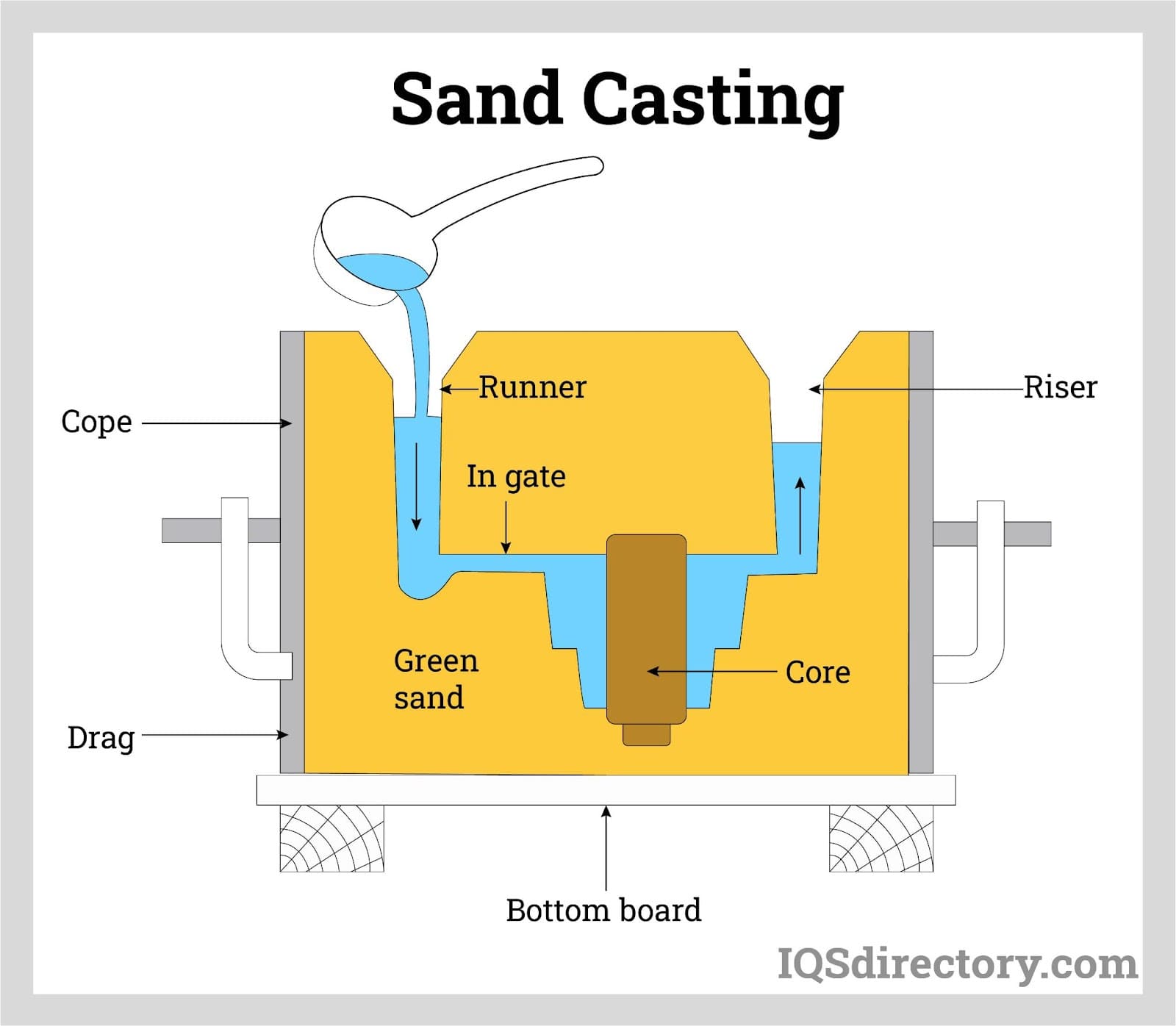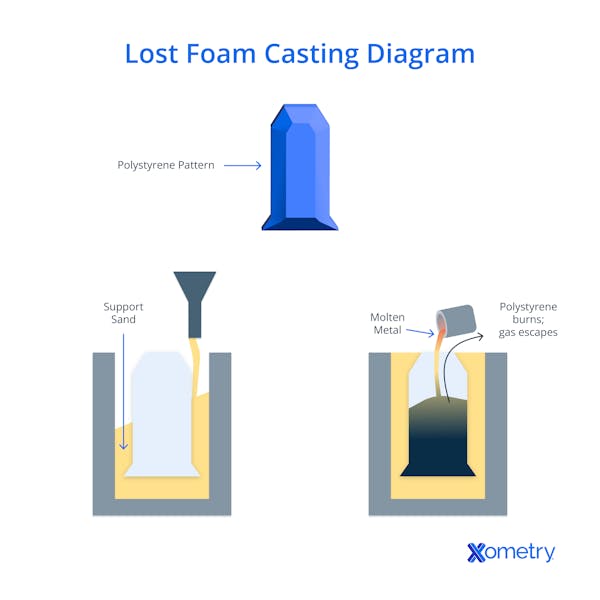Learn the benefits of Aluminum Foundry Wisconsin for modern casting projects
Exactly How Aluminum Foundry Adds to Advancements in Aerospace Engineering
Aluminum shops are integral to improvements in aerospace design. They generate lightweight, high-strength elements that are important for modern-day aircraft. Via sophisticated spreading techniques, these factories create intricate geometries that boost architectural integrity. In addition, the advancement of premium Aluminum alloys sustains the market's concentrate on gas effectiveness and sustainability. However, obstacles remain in the manufacturing procedure. Comprehending these factors discloses the extensive impact of Aluminum on aeronautics's future.
The Value of Lightweight Materials in Aerospace Style
As the aerospace sector remains to progress, the relevance of light-weight materials comes to be increasingly noticeable. The demand for efficiency and sustainability drives engineers to focus on using products that lower overall weight without jeopardizing structural stability. Light-weight products, particularly Aluminum, play a crucial function in improving fuel efficiency, improving haul capacity, and enhancing the overall performance of aircraft.
The assimilation of these products allows for ingenious designs, enabling producers to produce even more wind resistant forms that can hold up against severe problems. The decrease in weight not just reduces functional prices yet additionally adds to a lowered ecological footprint, lining up with global efforts toward sustainability in aviation.
Advanced Casting Techniques in Aluminum Foundries
Advanced casting strategies in Aluminum factories play an important duty in aerospace engineering by enabling the manufacturing of exact and lightweight elements. Advancements in mold style and accuracy spreading procedures are vital in attaining suitable efficiency and structural integrity. Additionally, the development of lightweight alloys boosts the overall performance and performance of aerospace applications.
Cutting-edge Mold Design
Cutting-edge mold design plays an important role in the performance and efficiency of Aluminum shops, particularly within the aerospace market. By leveraging innovative products and methods, modern molds can be crafted to stand up to heats and stress, ensuring peak efficiency during the casting process. These styles usually include complex geometries that permit for the manufacturing of lightweight yet structurally audio components, vital for aerospace applications. Furthermore, the use of computer-aided style (CAD) software application helps with specific modeling, allowing shops to replicate and improve mold and mildew designs prior to physical production starts. This not just improves the high quality of actors parts however additionally minimizes waste and preparation, resulting in significant price savings. In general, ingenious mold and mildew design is a foundation of progression in Aluminum Foundry modern technology for aerospace engineering.
Precision Casting Procedures
The effectiveness of ingenious mold styles flawlessly integrates with precision spreading procedures, which are crucial for producing top notch Aluminum components in aerospace engineering. These processes, consisting of sand spreading, pass away casting, and investment casting, assure the creation of complex geometries with tight resistances. Advanced strategies like vacuum cleaner spreading and stress die casting improve the stability and surface coating of the last items. Accuracy casting lessens product waste while taking full advantage of the mechanical residential or commercial properties of Aluminum, vital for aerospace applications. Additionally, employing real-time monitoring and advanced simulation devices during the spreading procedure enables instant adjustments, leading to improved high quality control. Collectively, these precision spreading processes position Aluminum shops at the center of aerospace innovation, sustaining the sector's demand for dependability and efficiency.
Lightweight Alloy Development
As aerospace engineers seek to boost fuel efficiency and efficiency, lightweight alloy advancement ends up being a crucial emphasis in Aluminum shops. These factories employ sophisticated casting strategies to develop alloys that offer remarkable strength-to-weight proportions. Innovations in alloy make-up, consisting of the unification of components like lithium and magnesium, make it possible for the production of products that hold up against severe problems while decreasing total aircraft weight. Techniques such as die casting and financial investment casting assist in the precision production of complicated shapes, which are crucial for aerospace applications. Furthermore, continuous research intends to enhance these alloys for improved mechanical homes and increased toughness. By prioritizing light-weight alloy development, Aluminum factories significantly add to the advancement of aerospace design, paving the means for much more efficient and lasting airplane styles.

Enhancing Structural Honesty With Aluminum Parts
Aluminum parts offer considerable advantages in boosting structural stability within aerospace design. Their light-weight nature adds to general effectiveness while maintaining toughness, which is important for airplane performance. In addition, the stress resistance residential or commercial properties of Aluminum aid assure the resilience and reliability of aerospace frameworks under numerous operational conditions.
Lightweight Material Benefits
While standard materials typically jeopardize weight for strength, making use of Aluminum parts in aerospace design uses considerable advantages in architectural honesty. Aluminum's light-weight nature adds to total style efficiency, enabling even more streamlined airplane that consume less gas, consequently enhancing sustainability. The product's superb strength-to-weight proportion guarantees that parts preserve toughness without adding unneeded mass. This high quality promotes boosted performance and agility in trip, as well as maximized haul capabilities. Furthermore, Aluminum's resistance to corrosion prolongs the life-span of aerospace structures, decreasing upkeep expenses and boosting safety. As manufacturers significantly adopt Aluminum alloys, the aerospace sector experiences a transformative shift towards more efficient and efficient design services that focus on both efficiency and environmental obligation.
Tension Resistance Residences
Although various products possess special buildings, Aluminum's exceptional anxiety resistance sticks out as a critical aspect in boosting the structural integrity of aerospace parts. This resistance plays a vital function in making certain that airplane can withstand various functional stress and anxieties, including exhaustion, influence, and ecological problems. Aluminum alloys, specifically engineered for aerospace applications, display high tensile toughness while keeping lightweight qualities, allowing designers to create extra reliable frameworks - Aluminum Foundry. Furthermore, the capability of Aluminum to endure cyclic loading without considerable deformation contributes to the longevity and reliability try this website of aerospace parts. As improvements proceed in Aluminum Foundry methods, the advancement of stress-resistant Aluminum components promises additional enhancements in performance, security, and efficiency throughout the aerospace sector, strengthening Aluminum's role as a preferred material in modern design
Fuel Efficiency Improvements Driven by Aluminum Innovations
As the aerospace industry looks for to enhance fuel efficiency, cutting-edge uses Aluminum have actually arised as a necessary option. Aluminum's lightweight nature especially minimizes aircraft weight, permitting lower fuel consumption during flight. This reduction in weight is important, as also little decreases can bring about considerable improvements in total fuel economy.
Advanced Aluminum alloys, made for improved strength and resilience, allow manufacturers to develop components that maintain structural honesty while reducing mass - Aluminum Foundry. Furthermore, the integration of Aluminum in airframes and engine elements facilitates enhanced aerodynamics, adding to decreased drag and raised effectiveness
The fostering of Aluminum in aerospace not just meets the need for fuel-efficient design yet also lines up with regulative pressures for reduced discharges. As these advancements continue to advance, they play a considerable duty in setting new standards for gas effectiveness, ensuring that the aerospace industry can fulfill expanding environmental and economic challenges.

The Function of Aluminum in Sustainable Aeronautics Practices
The raising focus on sustainable air travel methods has actually positioned Aluminum as a vital product in the quest for greener aircraft design. Known for its light-weight homes, Aluminum considerably reduces aircraft weight, bring about lower fuel consumption and exhausts. Its recyclability even more boosts its sustainability account, as Aluminum can be recycled forever without loss of high quality. This characteristic sustains a circular economy within the aviation sector, minimizing waste and resource deficiency.
Additionally, innovations in Aluminum alloys have actually enhanced their stamina and rust resistance, permitting longer service life and reduced upkeep demands. These technologies assist in the development of much more efficient aircraft structures, adding to general sustainability initiatives. Additionally, Aluminum's thermal conductivity plays an essential duty in energy-efficient styles, boosting systems such as warm exchangers. Collectively, these characteristics highlight Aluminum's pivotal function ahead of time lasting air travel, straightening with global campaigns focused on decreasing the ecological impact of flight.
Obstacles Dealt With by Aluminum Foundries in Aerospace Production
While Aluminum factories play a vital duty in aerospace production, they face considerable challenges that can impact manufacturing performance and quality. One major difficulty is the strict top quality control standards needed in the aerospace industry. Any type of issue can endanger safety and performance, requiring rigorous assessment procedures that extend production timelines. Furthermore, shops commonly emulate fluctuating resources expenses, which can influence rates and success. The complexity of Aluminum alloys utilized in aerospace applications more makes complex the production procedure, as exact solutions are crucial for accomplishing wanted mechanical buildings. Furthermore, competent labor lacks impede the capability to maintain top notch manufacturing levels. Environmental regulations enforce constraints on emissions and waste management, calling for shops to spend in sustainable practices, which can be cost-prohibitive. These elements collectively develop a landscape where Aluminum factories need to constantly adapt to meet the advancing needs of aerospace production while making certain safety and security and compliance.
Future Patterns in Aluminum Applications for Aerospace Design
With innovations in modern technology and boosting demands for performance, the future of Aluminum applications in aerospace design is positioned for significant improvement. The combination of ingenious Aluminum alloys and composites is anticipated to boost strength-to-weight proportions, causing even more fuel-efficient aircraft styles. Furthermore, developments in additive manufacturing methods will permit the manufacturing of intricate Aluminum frameworks that were formerly difficult, maximizing efficiency and decreasing waste.

Lasting methods will certainly play a vital role, with a growing focus on recycling Aluminum to lessen ecological impact. The aerospace market is most likely to welcome smarter producing procedures, such as automation and expert system, making sure better and accuracy in Aluminum parts. Partnerships between Aluminum foundries and aerospace business will promote research study and development, leading the means for new applications you could check here that fulfill the strict demands of contemporary aerospace design. In general, the future looks assuring for Aluminum's function fit the skies
Frequently Asked Concerns
What Are the Environmental Effects of Aluminum Manufacturing in Aerospace?
The environmental impacts of Aluminum production in aerospace consist of significant power usage, greenhouse gas emissions, and environment disturbance. Furthermore, mining processes can bring about dirt destruction and water contamination, elevating concerns about sustainability and ecological equilibrium.
Just How Does Aluminum Contrast to Various Other Products in Aerospace Applications?
Aluminum offers an unique mix of lightweight residential or commercial properties, deterioration resistance, and cost-effectiveness contrasted to other products. Its high strength-to-weight ratio makes it especially beneficial for aerospace applications, improving gas performance and total performance in aircraft layout.
What Credentials Do Aluminum Foundry Workers Demand for Aerospace Projects?
Aluminum Foundry employees need customized training in metallurgy and casting techniques, together with understanding of aerospace sector requirements. Qualifications in high quality control and security methods are likewise important to assure compliance with rigorous aerospace task demands.
Are There Any Type Of Safety And Security Worry About Utilizing Aluminum in Aerospace Engineering?
Safety problems pertaining to Aluminum in aerospace design consist of vulnerability to stress and anxiety, exhaustion, and deterioration cracks. Correct treatment and alloy choice are vital to alleviate these threats, making sure browse around this web-site structural honesty and overall safety in aerospace applications.
Just How Does Aluminum Recycling Benefit the Aerospace Sector?
Aluminum reusing significantly profits the aerospace industry by minimizing product costs, reducing environmental effect, and preserving energy. This lasting technique boosts the sector's performance while promoting making use of lightweight, high-performance parts in airplane manufacturing.
Advanced spreading strategies in Aluminum shops play an important duty in aerospace design by making it possible for the manufacturing of light-weight and precise components. Ingenious mold style plays an essential function in the performance and performance of Aluminum factories, particularly within the aerospace field. As aerospace engineers seek to enhance gas performance and efficiency, lightweight alloy development becomes a necessary focus in Aluminum foundries. Aluminum alloys, specifically crafted for aerospace applications, display high tensile stamina while maintaining light-weight features, allowing engineers to develop more reliable structures. Partnerships in between Aluminum foundries and aerospace companies will cultivate research and growth, leading the method for brand-new applications that fulfill the rigid needs of contemporary aerospace design.